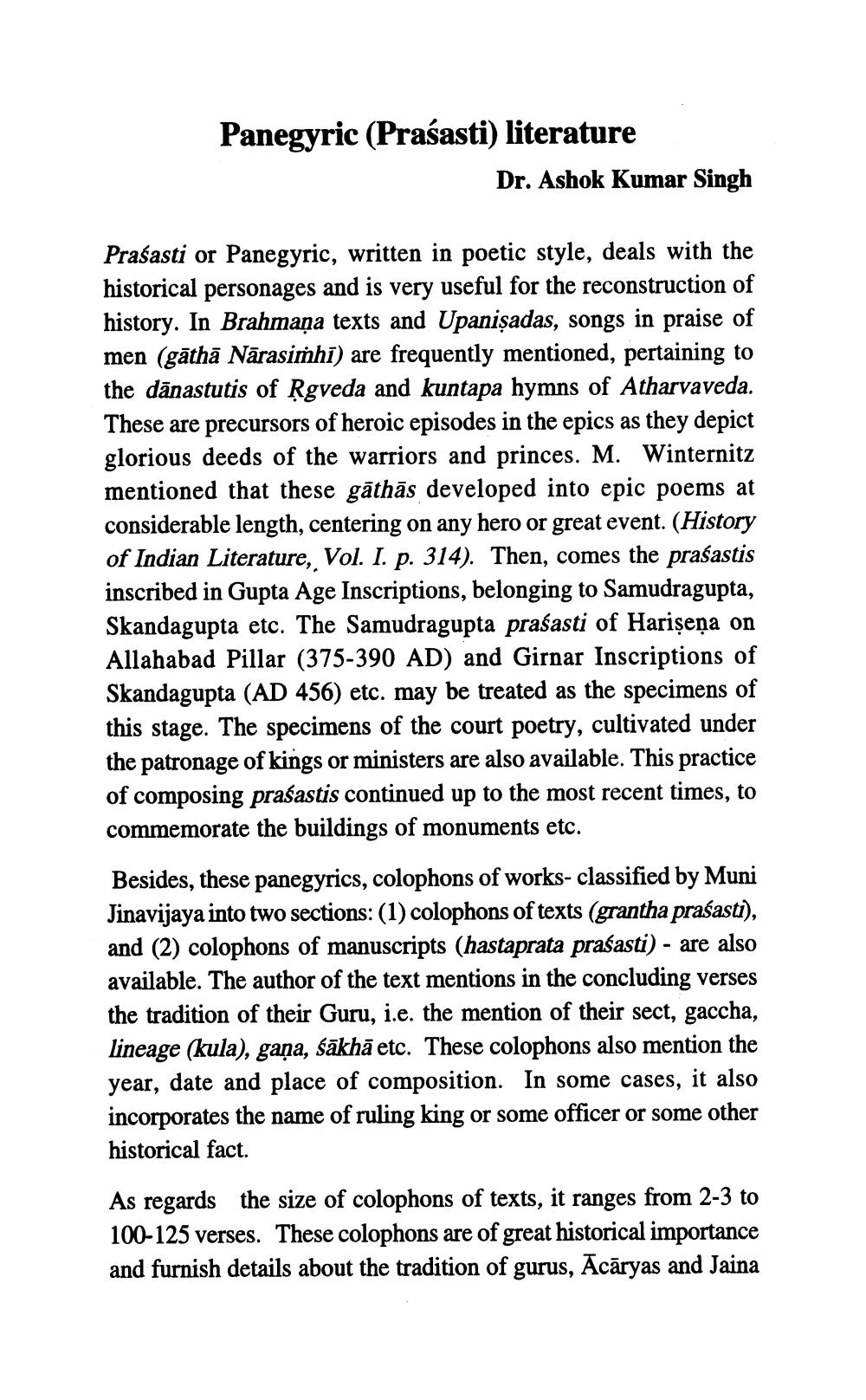________________
Panegyric (Prasasti) literature
Dr. Ashok Kumar Singh
Praśasti or Panegyric, written in poetic style, deals with the historical personages and is very useful for the reconstruction of history. In Brahmaņa texts and Upanişadas, songs in praise of men (gāthā Nārasimhi) are frequently mentioned, pertaining to the dānastutis of Ķgveda and kuntapa hymns of Atharvaveda. These are precursors of heroic episodes in the epics as they depict glorious deeds of the warriors and princes. M. Winternitz mentioned that these gāthās developed into epic poems at considerable length, centering on any hero or great event. (History of Indian Literature, Vol. I. p. 314). Then, comes the praśastis inscribed in Gupta Age Inscriptions, belonging to Samudragupta, Skandagupta etc. The Samudragupta praśasti of Harişeņa on Allahabad Pillar (375-390 AD) and Girnar Inscriptions of Skandagupta (AD 456) etc. may be treated as the specimens of this stage. The specimens of the court poetry, cultivated under the patronage of kings or ministers are also available. This practice of composing praśastis continued up to the most recent times, to commemorate the buildings of monuments etc. Besides, these panegyrics, colophons of works- classified by Muni Jinavijaya into two sections: (1) colophons of texts (grantha prasasti), and (2) colophons of manuscripts (hastaprata prasasti) - are also available. The author of the text mentions in the concluding verses the tradition of their Guru, i.e. the mention of their sect, gaccha, lineage (kula), gana, śākhā etc. These colophons also mention the year, date and place of composition. In some cases, it also incorporates the name of ruling king or some officer or some other historical fact.
As regards the size of colophons of texts, it ranges from 2-3 to 100-125 verses. These colophons are of great historical importance and furnish details about the tradition of gurus, Ācāryas and Jaina




